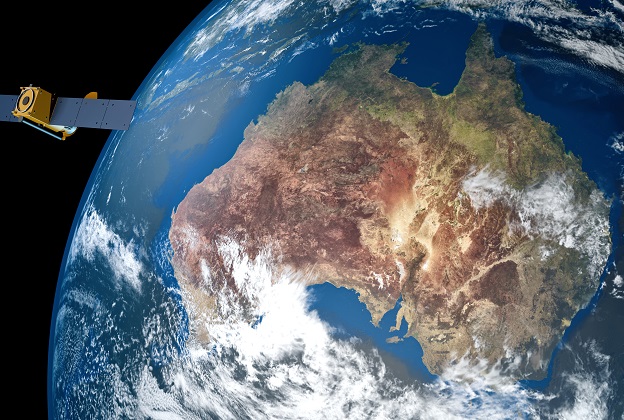
Image credit: ©stock.adobe.com/au/Sasa Kadrijevic
The federal government has announced in its latest Budget that it is establishing Australia’s first ever national space mission, aiming to strengthen the nation’s sovereign capability, grow the sector and create hundreds of new jobs.
The 2022–23 Budget includes $1.16 billion to 2038–39 and $38.5 million per annum ongoing for the first phase of a National Space Mission for Earth Observation, which will see Australia design, build and operate four new satellites.
Led by the Australian Space Agency, this Mission will make Australia more self-sufficient when it comes to critical Earth Observation data, while also growing capability and job opportunities that will set the industry up for future success.
Minister for Science and Technology Melissa Price said this was the most significant investment ever made in Australia’s civil space sector.
“Developing and launching these first four Australian satellites will create the foundation of industry know-how for more complex space missions next decade. That means more expertise and more jobs right here in Australia in this critical industry,” the Minister said.
“It will also solidify our relationships with like-minded countries so we can continue to draw on the data from their satellites for the benefit of all Australians.”
It is estimated the project will create more than 500 jobs over the first four years of the build phase, with an anticipated supplier network of more than 100 companies from across Australia.
The National Space Mission will be led by the Australian Space Agency in partnership with Geoscience Australia, CSIRO, the Bureau of Meteorology and Defence.
The Budget also includes:
- $65.7 million over five years from 2021–22 to set the conditions for rocket launches from Australia and fast track the launch of space assets and research projects by Australian businesses and researchers.
- $12.1 million over five years from 2021–22 (and $0.3 million per year ongoing) to remove cost-recovery requirements under the Space (Launches and Returns) Act 2018 and undertake a regulatory reform program to streamline interactions with industry.
- $9.5 million over two years from 2021–22 to develop a Space Strategic Update to provide direction on future funding opportunities and align Australia’s space efforts.
- $3.0 million in 2022–23 to extend the International Space Investment initiative and continue building relationships with international space agencies.
- $25.2 million to expand the International Space Investment initiative and provide funding for Australian businesses and research organisations to work on projects with the Indian Space Research Organisation and the broader Indian space sector.
The funding takes the total amount committed by the federal government to the civil space sector to well over $2 billion since it established the Australian Space Agency in 2018.
The Budget also includes:
- $33.4 million over two years from 2021–22 (including $14.4 million in capital funding) to the National Measurement Institute to deliver essential measurement standards and services that underpin business continuity and international trade.
- $5.3 million over two years from 2021–22 to improve the National Science and Technology Council’s provision of science and technology advice to the Government and to continue support of the Prime Minister’s Prizes for Science event.
- $4.7 million over four years from 2022–23 to continue support for the Women in STEM Ambassador initiative and the Future You national digital awareness-raising initiative.
- $2.0 million over four years from 2021–22 to extend the Superstars of STEM Program, to continue raising the profile of Australian women in STEM and inspire the next generation.
Alongside this investment are other initiatives the Government has committed to, including:
- $42.4 million to grow the pool of women in STEM by providing up to 500 university scholarships, co-funded with industry.
- More than $450 million in funding for CSIRO to ensure the continuation of critical scientific research in a range of priority areas.
- $124 million to make Australia a world leader in artificial intelligence through the AI Action Plan.
- More than $387 million in funding to meet Australia’s commitments as co-host of the Square Kilometre Array radio telescope.
Stay up to date by getting stories like this delivered to your inbox.
Sign up to receive our free weekly Spatial Source newsletter.







